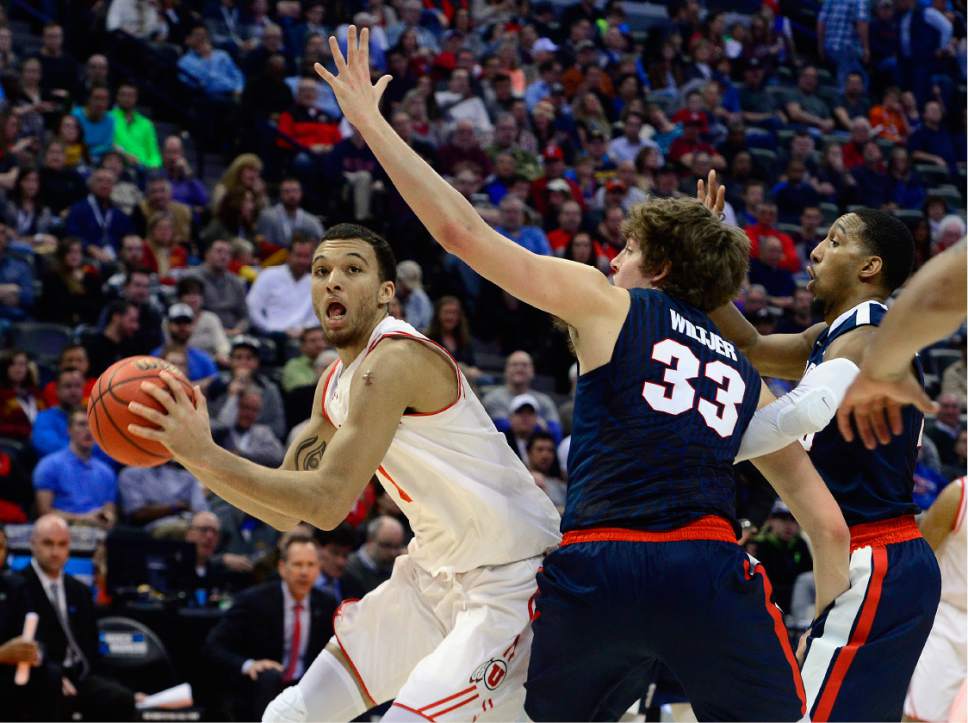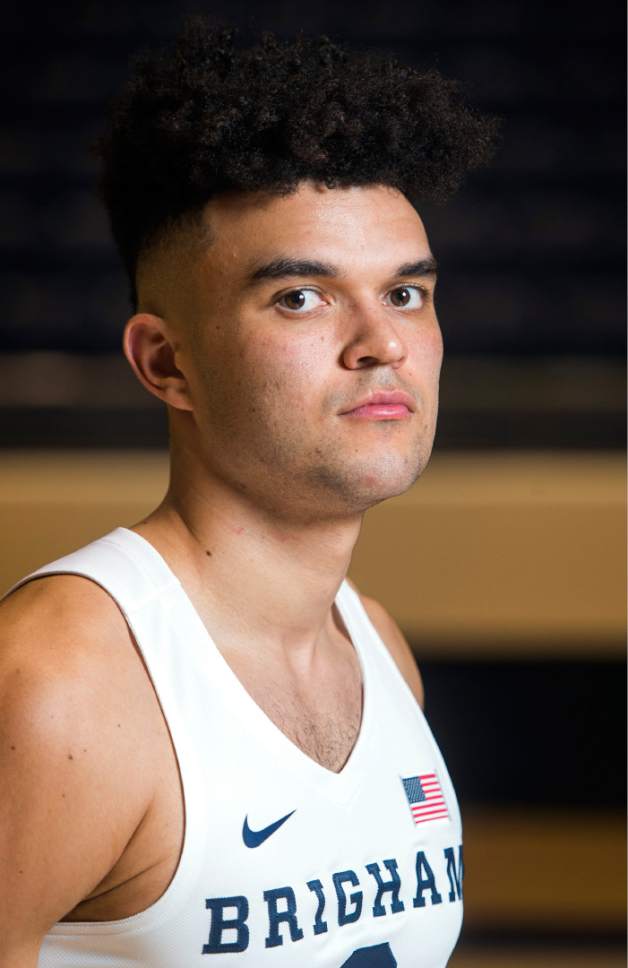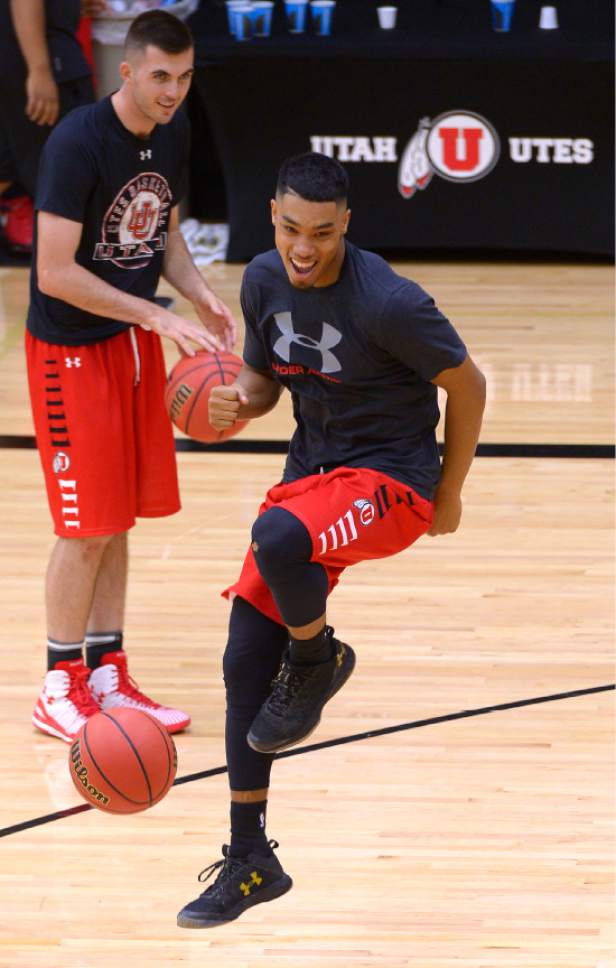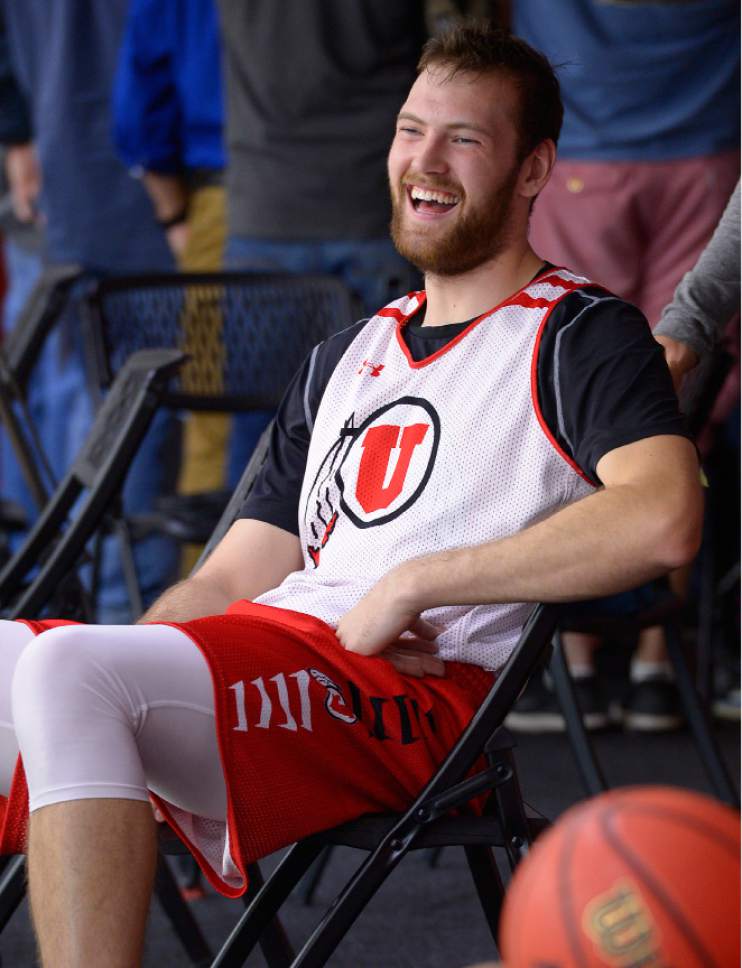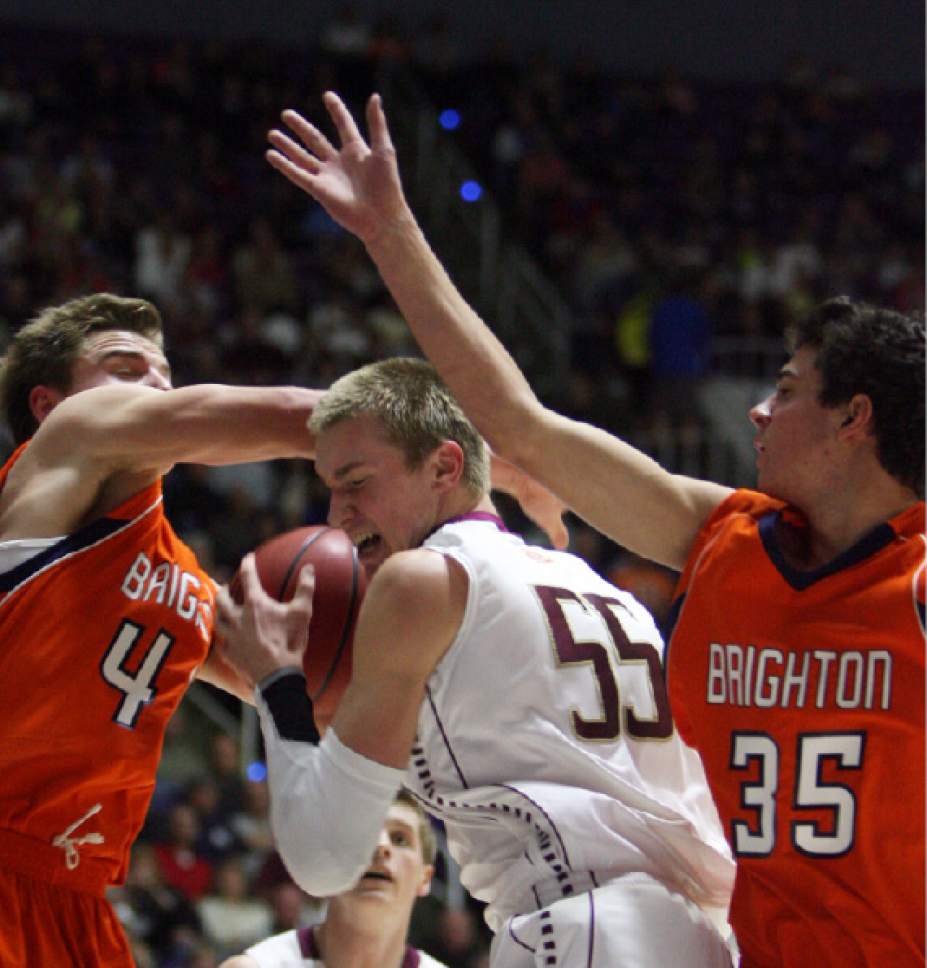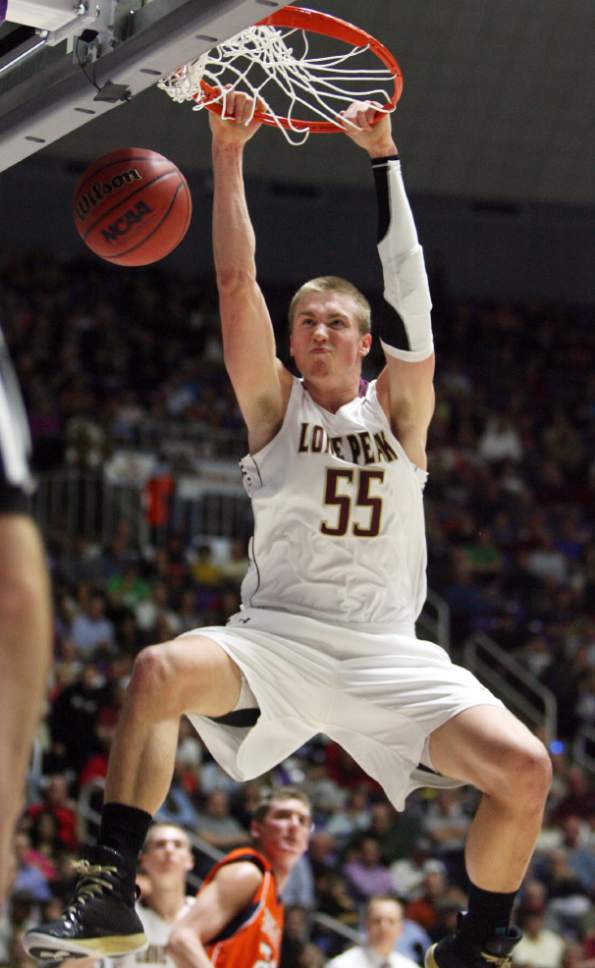This is an archived article that was published on sltrib.com in 2016, and information in the article may be outdated. It is provided only for personal research purposes and may not be reprinted.
David Collette accounts for only 7.7 percent of this phenomenon, even counting him twice.
With his controversial (in Logan, anyway) transfer from Utah State to Utah, Collette created a vacancy on the Aggie roster and became a newcomer to the 2016-17 Utes. He's hardly alone in moving around. Thanks mostly to an unprecedented number of transfers in and out of the six programs, Utah's Division I schools have experienced more turnover than ever, making this college basketball season mysterious.
It will be fun and frustrating at various checkpoints. BYU, Utah and USU collectively have 26 new players — explaining the Collette math formula — among 39 scholarship athletes, creating challenges for coaches.
Building a team from year to year in college athletics is "never boring," said Utah coach Larry Krystkowiak. Yet assembling this season's products has required more creative staffing than usual. The volume of transfers reflects "the world we're playing in," said Utah Valley coach Mark Pope.
Apparently nothing will stop this trend, so coaches have to embrace it. And talent upgrades via transfers, even as a tradeoff for experience and cohesion, will always stir interest among fans. Utah is anticipating big things from Sedrick Barefield, BYU is hoping for all-around production from Elijah Bryant when he's healthy and Utah Valley already witnessed Brandon Randolph's 20-point, 10-rebound, 10-assist effort Monday in an exhibition game vs. Western State.
Weber State is the state's only team with any real degree of continuity, disregarding the loss of forward Joel Bolomboy, who's now playing for the Utah Jazz. That's why the Wildcats are the Big Sky Conference favorites this season, even while Utah transfer Brekkott Chapman is redshirting in Ogden.
Amid all of the roster changes nationally, Sports Illustrated pointed out how a 2009-10 Butler team that featured current Jazz players Gordon Hayward and Shelvin Mack benefited from experience. The Bulldogs returned every rotation player that season and reached the NCAA championship game. Using that precedent, the magazine targets Wisconsin, Princeton and Saint Mary's for big seasons in 2016-17, with those teams returning 97.9 percent or more of their player-minutes from last year.
Even subtracting Bolomboy, the Big Sky Player of the Year, Weber State's returnees accounted for 84.8 percent of minutes played last season — more than doubling the percentage of any other roster in the state. As their teams come together, fans of other schools will need some patience and faith.
That's especially true at Utah, where Collette and Barefield will become eligible after the first semester. They'll presumably make their Utah debuts against Prairie View A&M on Dec. 17 — in the Utes' 10th game, only two weeks before they start the Pac-12 schedule.
"You can just rest assured, we've got some guys that can play a little bit," Krystkowiak said.
The Utes will ease into their schedule by facing two lower-level opponents, while other schools have experimented with lineups in exhibition games. And you'll be reading a lot of quotes like these in November and beyond.
"The biggest takeaway for us as coaches was how young and new we are as far as playing together goes," BYU's Dave Rose said after a win over Seattle Pacific.
"We are kind of a jumbled mess on the front line right now," USU's Tim Duryea said after beating Southern Virginia.
Freshman guard Koby McEwen, however, fueled expectations with a 7-of-7 shooting night and 19 points for the Aggies. And four seasons after being awarded a high school national championship at Lone Peak, BYU's Nick Emery, Eric Mika and TJ Haws finally have been reunited. They'll have a three-year run together in Provo. That's an eternity in BYU's landscape of personnel turnover resulting from church missions, and Rose knows those three players eventually will give him a chance to advance in the NCAA Tournament.
Not this season, necessarily. Led by guard Jeremy Senglin, Weber State will be the state's only qualifier in March, when Vivint Smart Home Arena hosts first- and second-round games.
Other fans can look ahead to 2017-18, when BYU and Utah will return to the tournament with decent seeds and Utah Valley will make its first appearance.
Twitter: @tribkurt —
Experience preferred
Wisconsin, considered a Final Four contender, returns 99.7 percent of its player-minutes from last season. Here's how Utah's Division I programs compare in 2016-17:
Team Returning MPG
Weber State 84.4
BYU 40.1
Southern Utah 37.9
Utah State 33.5
Utah Valley 27.7
Utah 26.8


